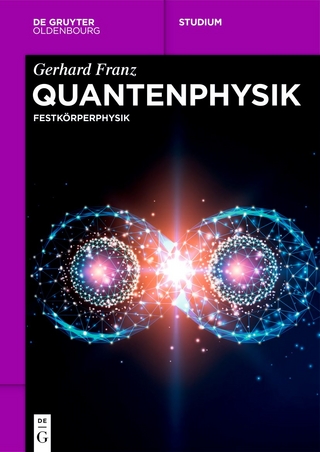
Semiconducting Silicides
Springer Berlin (Verlag)
978-3-642-64069-8 (ISBN)
Victor E. Borisenko graduated in 1973 from the Belarusian State University of Informatics and Radioelectronics (BSUIR) as an engineer in semiconductor electronics. He received his first doctorate in physics and mathematics in 1980, his second one in 1988. Since 1990, he has held positions as a professor in many universities worldwide, including the University of Salford in England, the University of Wuppertal in Germany and the University of Electro-Communications in Tokyo, Japan. He now holds a chair as professor and vice-rector of BSUIR and acts as supervisor of the Interuniversity Center of Nanoelectronics and Novel Materials. Since 1995, Professor Borisenko organizes the international conference on physics, chemistry and applications of nanostructures `Nanomeeting? His research team focuses on fundamental electronic and optical properties of semiconducting silicides and low dimensional silicon based nanostructures, carrier transport in semiconductor/dielectric multiquantum wells and DNA, design of novel nanoelectronics and nanophotonic devices, quantum computing.
1 General Material Aspects.- 1.1 Crystalline Structure and Mechanical Properties.- 1.2 Thermodynamics of Silicidation.- 1.3 Kinetics of Silicidation.- 1.4 Thermal Oxidation of Silicides.- 2 Thin Film Silicide Formation.- 2.1 Silicides and Silicon Epitaxial Relationships.- 2.2 Diffusion Synthesis.- 2.3 Ion Beam Synthesis.- 2.4 Atomic and Molecular Deposition.- 2.5 General Comments on Silicide Formation Techniques.- 3 Crystal Growth.- 3.1 Methods of Crystal Growth and Material Problems.- 3.2 Crystal Growth by Chemical Vapor Transport Reactions.- 3.3 Crystal Growth from the Flux.- 3.4 Crystal Growth from the Melt.- 3.5 Summary.- 4 Fundamental Electronic and Optical Properties.- 4.1 Basic Relationships.- 4.2 Electronic Band Structure.- 4.3 Interband Optical Spectra.- 4.4 Light Emission.- 4.5 Infrared Optical Response and Raman Scattering.- 4.6 Concluding Remarks.- 5 Transport Properties.- 5.1 Free Charge Carriers and Their Mobility in Semiconductors.- 5.2 Experimental Resistivities.- 5.3 Mobility of Charge Carriers.- 5.4 Thermoelectric Properties.- 5.5 Concluding Remarks.- References.
| Erscheint lt. Verlag | 27.9.2011 |
|---|---|
| Reihe/Serie | Springer Series in Materials Science |
| Zusatzinfo | XVI, 348 p. |
| Verlagsort | Berlin |
| Sprache | englisch |
| Maße | 155 x 235 mm |
| Gewicht | 556 g |
| Themenwelt | Naturwissenschaften ► Physik / Astronomie ► Festkörperphysik |
| Technik ► Elektrotechnik / Energietechnik | |
| Technik ► Maschinenbau | |
| Schlagworte | band structure • Crystal • Diffusion • Kinetics • Materials properties • Materials Science • mechanical property • optical properties • scattering • semiconductor • semiconductors • Silicides • Thin Films |
| ISBN-10 | 3-642-64069-9 / 3642640699 |
| ISBN-13 | 978-3-642-64069-8 / 9783642640698 |
| Zustand | Neuware |
| Haben Sie eine Frage zum Produkt? |
aus dem Bereich


